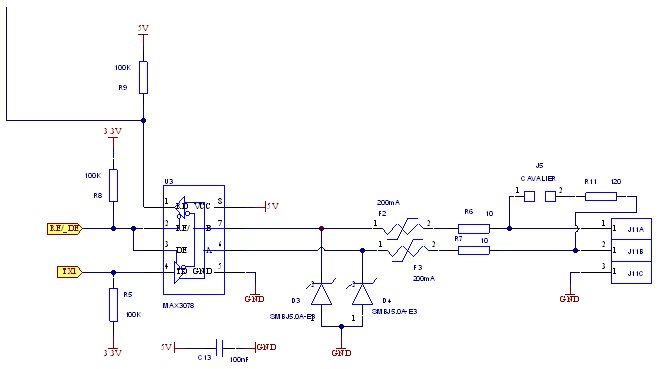Hello,
I have a problem witch the SN65HVD08 when it is in open mode, the /RE is low. In datacheat p12 table2 output (pin1) is hight but in real it low.
This can appeared when we have 2 receiver in the line (line in hight Z) or no connection.
This problem add one octet after the last octet transmit.
The solution is to set the end line 120 resistors for set the line to hight when don't have any transmission.
My schematic:


